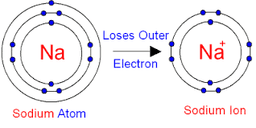Feel free to use or edit a copy
includes Teacher and Student dashboards
Measures 4 skills from
Measures 4 skills from
With a free account, teachers can
- edit the questions
- save a copy for later
- start a class game
- automatically assign follow-up activities based on students’ scores
- assign as homework
- share a link with colleagues
- print as a bubble sheet
32 questions
Show answers
- Q1The atomic number of an element is the total number of which particles in the nucleus?how many neutrons in the nucleus of that atomthe mass of that atomhow many electrons in the energy levels of that atomhow many protons in the nucleus of that atom30s
- Q2Can an element be changed into another substance?yes an element can change into another substanceIf heated, The element will change into another substanceNo an element can not change into another substance30s
- Q3Which elements are highly reactive and are mostly likely to form compounds?Elements in group 8 (noble gases) are the most reactiveElements in Groups 1 & 7 are the most reactive.30s8.P.1.2
- Q4Production of a solid in a chemical reactionprecipitate30s
- Q5The change in size, shape, or state of matter. Tearing a piece of paper in half or freezing water is an example of this.physcial changechemical change30s8.P.1.3
- Q6Jane is an artist that works with clay. What kind of change does the clay go through when she creates a new piece of art?Chemical ChangePhysical Change30s8.P.1.3
- Q7These are signs of what type of change? color change/new odor/bubbles/temperature change/solid precipitate/new substancesigns of a physical changesigns of a chemical reaction (chemical change)30s8.P.1.3
- Q8This law states that mass cannot be created nor destroyed, only changes formsLaw of SuperpositionLaw of Conservation of EnergyLaw of Conservation of Mass30s8.P.1.2
- Q9In a closed system (nothing can escape like a jar with a lid), you start with a mass of reactants of 100 grams. At the end of the chemical reaction, what should be the mass of the products?100 grams200 grams50 grams0 grams30s8.P.1.4
- Q10In an open system (gas can escape), the mass of the reactants is 100 grams. A gas was observed being released during the reaction. What is the mass of the products.The mass would be the 100 grams, because gas has no mass.The final mass would be less than 100 grams, because gas has mass and it escaped into the atmosphere.30s8.P.1.4
- Q11A chemical equation with the same number of atoms of each element on both sides of the equation is called a/an HINT: what goes in comes outbalanced equationunbalanced equation30s8.P.1.4
- Q12Which of the following equations are balanced?H2O + CO2 -----> H2CO3H2 + O2 -------->H2OMg + HCl ------> H2 + MgCl230s8.P.1.4
- Q13Is this equation balanced or unbalanced? H2+O ----> H2OUnbalancedBalanced30s8.P.1.4
- Q14H2O + CO2 -----> H2CO3 Is this equation balanced or unbalanced?UnbalancedBalanced30s8.P.1.4
- Q15H2O + CO2 -----> H2CO3 What is the total number of atoms on the reactant side?3 atoms4 atoms6 atoms7 atoms30s8.P.1.4
